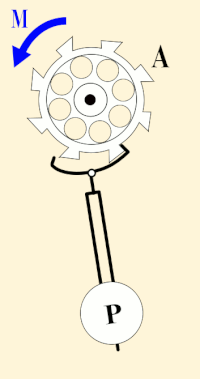
Photo from wikipedia
Purpose In proton therapy planning, the accuracy of the Stopping Power Ratios (SPR) calculated in the stoichiometric CT calibration is affected by, among others, uncertainties on the mean excitation energies… Click to show full abstract
Purpose In proton therapy planning, the accuracy of the Stopping Power Ratios (SPR) calculated in the stoichiometric CT calibration is affected by, among others, uncertainties on the mean excitation energies (I‐values) of human tissues and water. Traditionally, the contribution of these uncertainties on the SPR has been conservatively estimated of the order of 1% or more for a reference tissue of known composition. This study provides a methodology that enables a finer estimation of this uncertainty, eventually showing that the traditional estimates of the uncertainty are too conservative. Methods Since human tissues contain water, a correlation exists between the I‐values of tissues and water. As the SPR is the ratio of the tissue stopping power to that of water, this correlation decreases the uncertainty of the SPR. Our formalism considers this by expressing the I‐value of the tissue as a function of the water weight fraction and the I‐value of water, while applying Bragg's additivity rule only to the nonaqueous mixture of the tissue. For 22 reference tissue compositions, the SPR uncertainty was estimated by randomly sampling Gaussian distributions, based on ICRU data, for the I‐values of water and the nonaqueous mixture, as well as for the water weight fraction. Results The relative standard deviation of the SPR, estimated at 150 MeV, is in the range of 0.1%–0.3% for soft tissues with an average water weight percentage of at least 60%. For tissues with a low water content (e.g., adipose and bones), this uncertainty is in the range of 0.5%–0.7%. Conclusion Uncertainties on the I‐values of human tissues and water appear to have a significantly lower impact on the SPR uncertainty than traditionally expected. In the future, this may provide a rationale for using smaller distal and proximal margins on the target volume, provided that all other range uncertainty components are correctly estimated too.
Journal Title: Medical Physics
Year Published: 2018
Link to full text (if available)
Share on Social Media: Sign Up to like & get
recommendations!